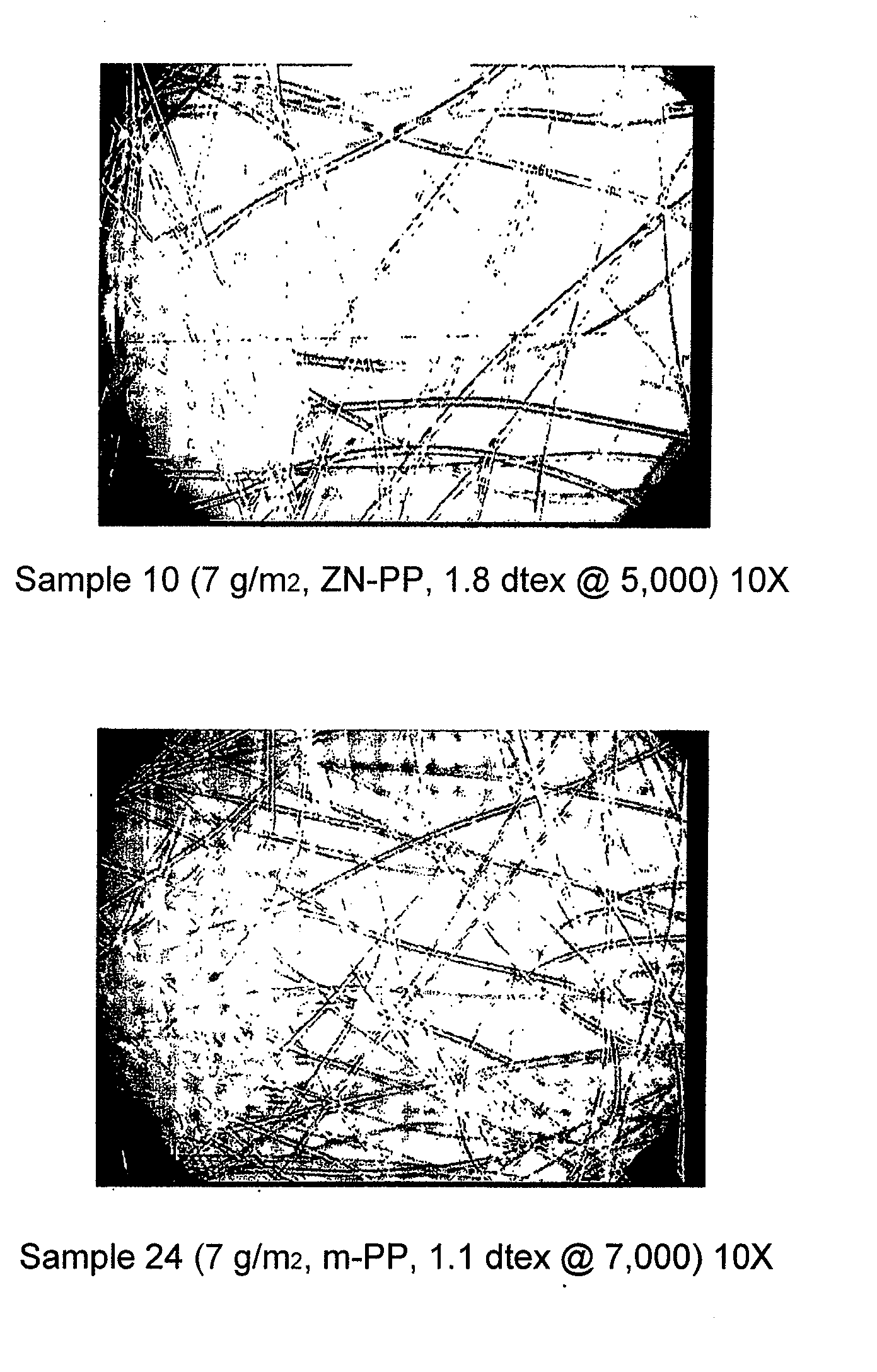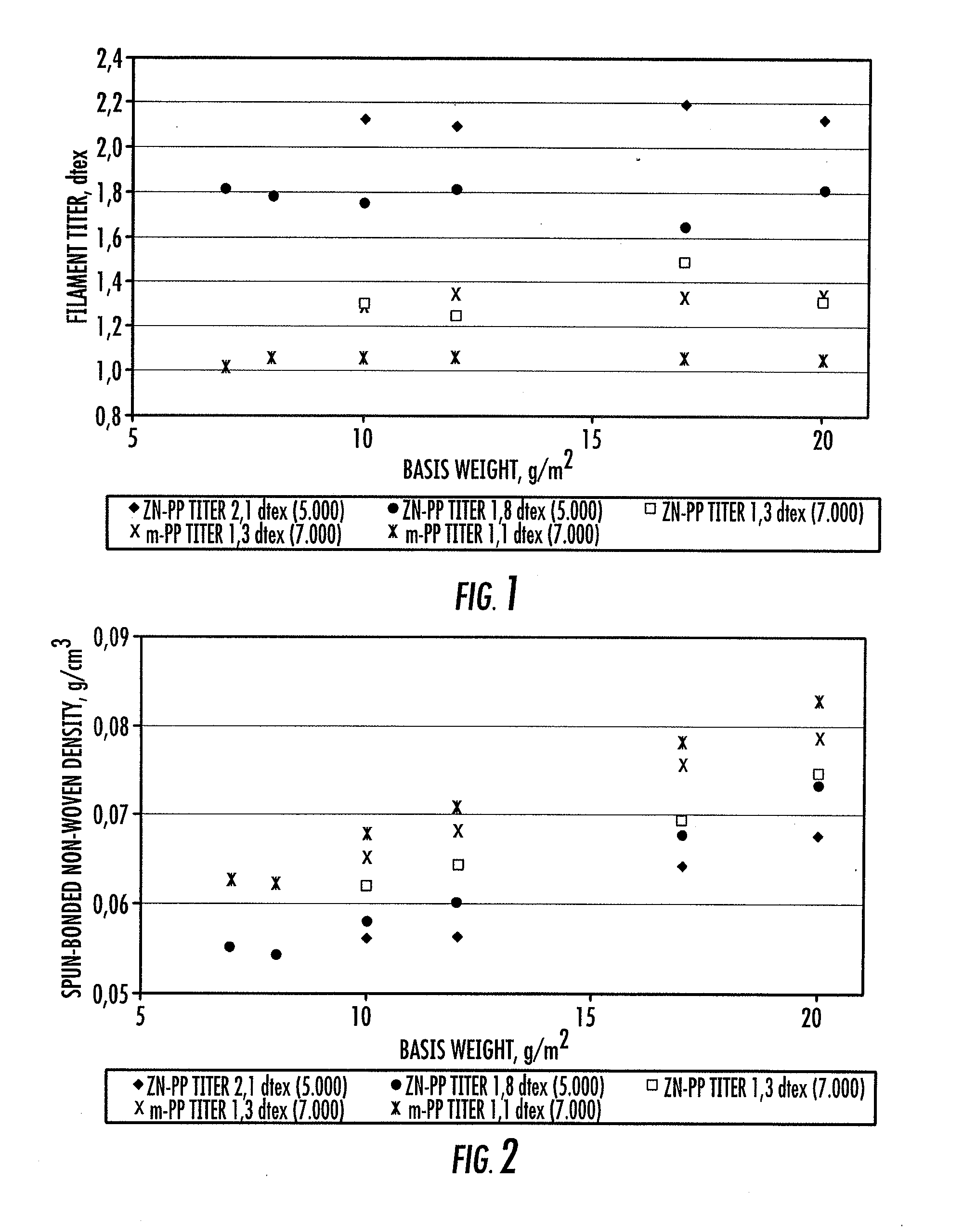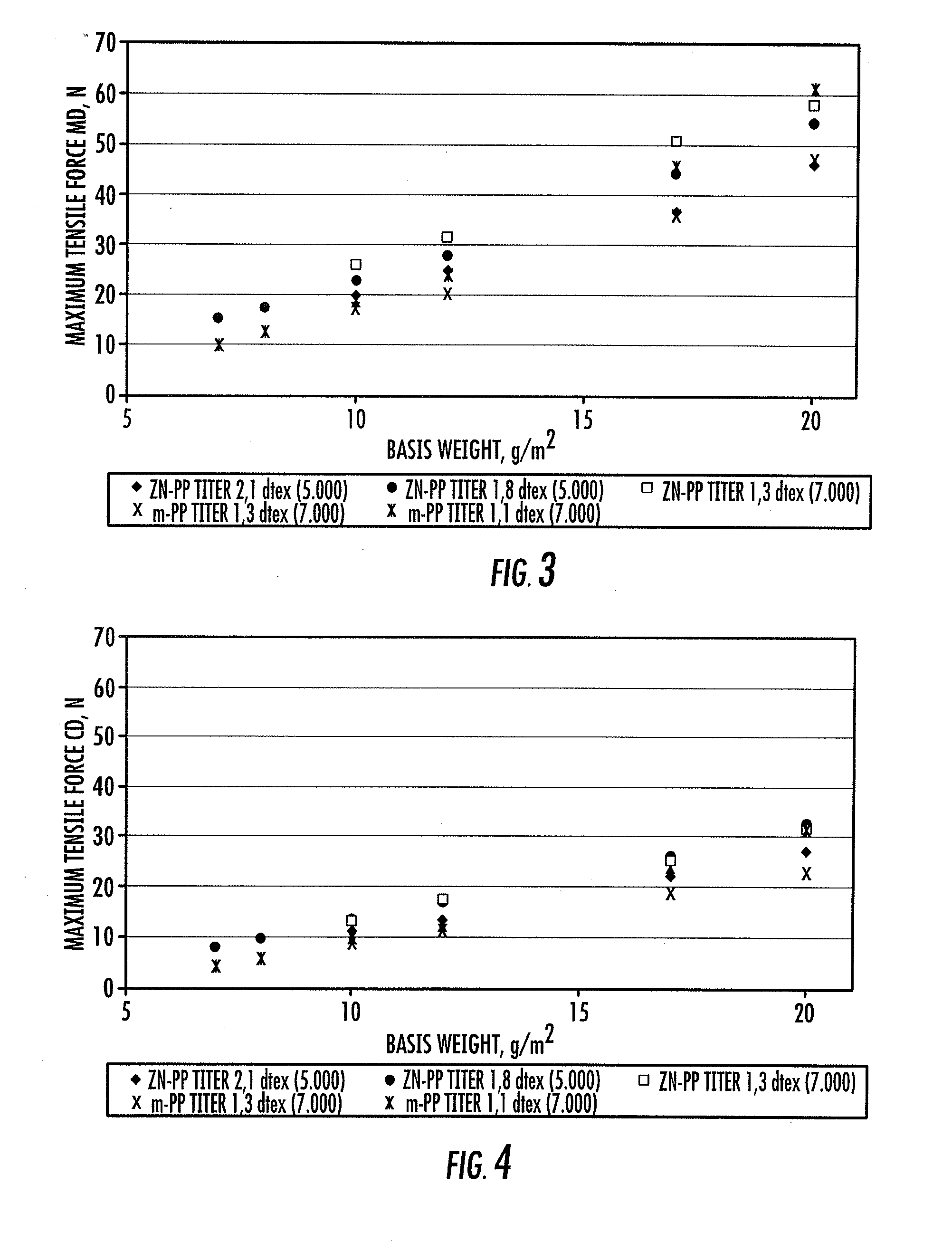Lightweight spun-bonded non-woven with particular mechanical properties
- Summary
- Abstract
- Description
- Claims
- Application Information
AI Technical Summary
Benefits of technology
Problems solved by technology
Method used
Image
Examples
example 2
[0059]For comparison, spun-bonded non-wovens with different basis weights were produced from a polypropylene produced by metallocene catalysis (Metocene HM562S; producer: Basell), subsequently called m-PP, with this altered spinning device with an increased number of nozzle openings per meter of spinning plate (7,000 nozzle openings per meter, width of the spinning package surface provided with openings 150 mm). The filament titer of the filaments forming the spun-bonded non-wovens was set at 1.3 dtex and 1.1 dtex.
[0060]The spun-bonded non-wovens so produced are referred to as “sample 15” to “sample 24.” The composition, process conditions and characteristic properties of the spun-bonded non-wovens produced from m-PP, as well as a laminate from two spun-bonded non-woven layers, can be seen in Table 2.
[0061]The basis weights of the produced one-layer spun-bonded non-wovens are varied from 7 g / m2 to 20 g / m2.
[0062]Further addition of melt additives or pigments such as e.g. titanium dio...
example 3
[0063]Production of the spun-bonded non-woven of “sample 25” occurred on a “Reicofil 3” spun-bonded non-woven installation in the form, so that a laminate was formed, in which two spun-bonded non-woven layers were combined in one process step. For this purpose, a configuration was chosen, in which to produce the first layer, (a) an ordinary spinning device (spinning plate with 5,000 nozzle openings per meter; width of the spinning package surface provided with nozzle openings 150 mm), and to produce the second spun-bonded woven layer, (b) an altered spinning device with increased number of nozzle openings per surface of the spinning plate (7,000 nozzle openings per meter of spinning plate; width of the spinning package surface provided with nozzle openings 150 mm) was used. The total installation throughput was chosen so that for both spinning devices (a) and (b), the same throughput was achieved. Based on the different configuration of the two spinning devices (a) and (b), this mea...
PUM
| Property | Measurement | Unit |
|---|---|---|
| Thickness | aaaaa | aaaaa |
| Force | aaaaa | aaaaa |
| Force | aaaaa | aaaaa |
Abstract
Description
Claims
Application Information
 Login to View More
Login to View More - R&D
- Intellectual Property
- Life Sciences
- Materials
- Tech Scout
- Unparalleled Data Quality
- Higher Quality Content
- 60% Fewer Hallucinations
Browse by: Latest US Patents, China's latest patents, Technical Efficacy Thesaurus, Application Domain, Technology Topic, Popular Technical Reports.
© 2025 PatSnap. All rights reserved.Legal|Privacy policy|Modern Slavery Act Transparency Statement|Sitemap|About US| Contact US: help@patsnap.com



